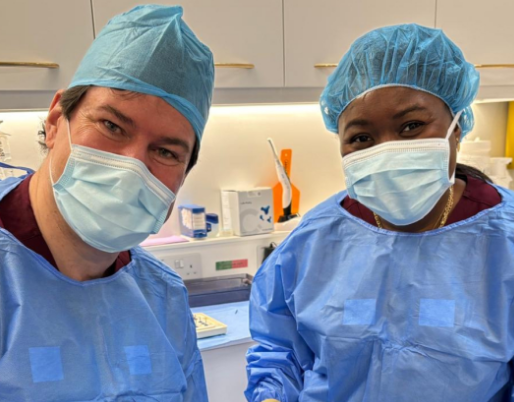For anyone considering replacing missing teeth, dental implants are a popular and reliable solution. Among the modern options available, ceramic dental implants have become increasingly sought-after. Patients are often curious about how the procedure works and what they should expect along the way. Understanding each stage of treatment helps to reduce uncertainty and build confidence before starting the journey.
This article explains what typically happens during a ceramic dental implant procedure, from the initial consultation right through to aftercare.
The First Consultation
The process begins with a thorough consultation. During this appointment, the dentist assesses the patient’s oral health, discusses treatment goals, and checks whether implants are suitable. X-rays or scans may be taken to evaluate the jawbone and ensure there is enough support for an implant.
This stage is also the chance for patients to ask questions about the benefits of ceramic dental implants, as well as how they differ from traditional metal-based options. Ceramic implants are often chosen for their natural appearance, biocompatibility, and suitability for those who prefer a metal-free solution.
Treatment Planning
Once suitability is confirmed, a detailed treatment plan is created. This outlines the number of implants required, the position of each implant, and the timeline of the procedure. Every patient’s mouth is unique, so the plan is tailored to individual needs.
Planning is a vital step because it ensures precision. The dentist takes into account factors such as bite, alignment, and gum condition. This careful preparation gives the implant the best chance of integrating successfully with the jawbone.
The Implant Placement
The main stage of treatment is placing the implant itself. The procedure is usually carried out under local anaesthetic, keeping patients comfortable throughout. A small opening is made in the gum to expose the bone, and the ceramic implant is carefully positioned into place.
Because ceramic dental implants are designed to blend naturally with the surrounding tissue, the placement process focuses on accuracy. The dentist ensures the implant is inserted at the correct depth and angle so it can fuse securely with the jaw over time.
Once the implant is in position, the gum is gently closed. The area is then left to heal while the bone gradually bonds with the implant, a process known as osseointegration.
The Healing Period
Healing is an important part of the implant journey. During this time, the bone and implant work together to form a strong foundation for the replacement tooth. The length of the healing period can vary, but most patients need several weeks to allow the implant to stabilise properly.
Patients are usually given guidance on caring for the implant site during this stage. This may include maintaining good oral hygiene, avoiding hard foods near the implant, and attending follow-up appointments to check progress.
Although this part of the process requires patience, it is crucial to achieving long-lasting results. A strong and secure implant ensures the final restoration feels comfortable and natural.
Adding the Abutment
Once the implant has successfully fused with the bone, the next step is attaching an abutment. This small connector links the implant to the crown that will sit on top. The dentist reopens the gum slightly to place the abutment and then allows the gum tissue to heal around it.
The abutment acts as the support for the new tooth, holding it firmly in place and ensuring it functions just like a natural tooth.
The Final Crown
After the gum has healed around the abutment, impressions of the mouth are taken. These are used to create a custom-made crown that matches the shape, size, and colour of the surrounding teeth.
The crown is then fitted securely onto the abutment. This final stage is what restores the full appearance and function of the smile. With ceramic dental implants, the result is both strong and natural-looking, offering patients the confidence to eat, speak, and smile without worry.
Aftercare and Maintenance
Following the procedure, ongoing care is essential. Although implants cannot decay like natural teeth, the surrounding gums and bone must be kept healthy. Daily brushing, flossing, and regular check-ups all play a role in maintaining the implant’s long-term success.
Patients are often advised to avoid habits such as smoking, which can affect healing and overall oral health. With proper care, ceramic dental implants can last for many years, providing a reliable and aesthetic solution for missing teeth.
The Patient Experience
Throughout the entire process, patients are supported with clear guidance and reassurance. From the very first consultation to the final fitting, each step is explained so that patients know exactly what to expect. The procedure is designed to be as comfortable as possible, with the aim of delivering lasting results that feel natural.
For many, the journey to receiving ceramic dental implants is transformative. Beyond restoring function, implants also improve confidence and enhance overall quality of life. Knowing what lies ahead helps patients feel prepared and informed when taking this important step in their dental care.
Professional Support You Can Trust
Choosing the right practice makes all the difference when undergoing implant treatment. At Optimal Dental Health, patients benefit from a team with experience in providing ceramic dental implants, along with a personalised approach to care. Every stage of the process is handled with attention to detail, ensuring the best possible outcome for each patient.





Comments